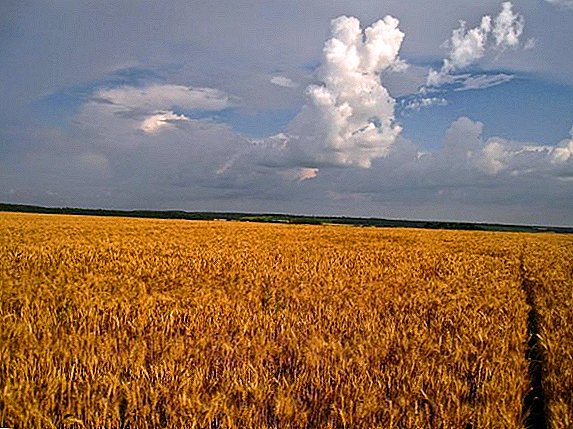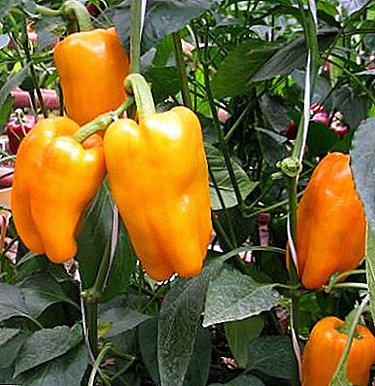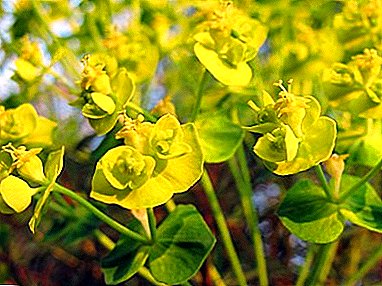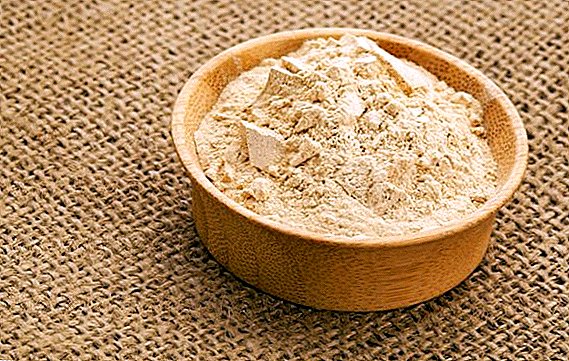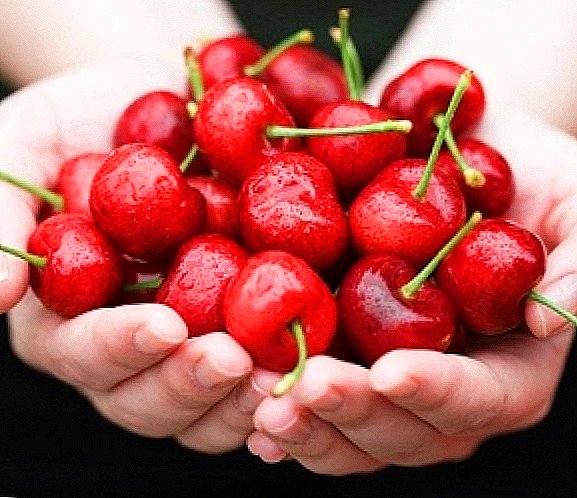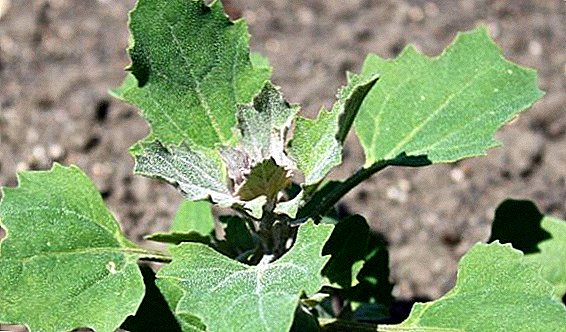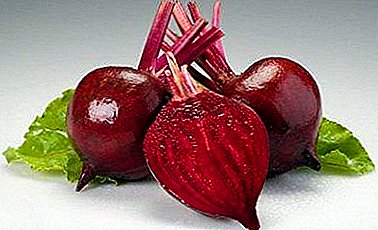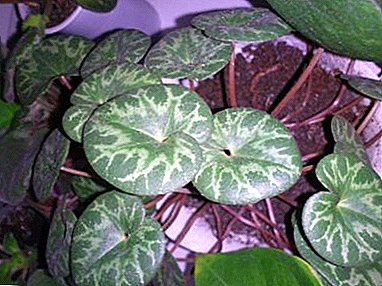
Cyclamen is one of the most popular indoor plants, on which flowers appear, striking a vast palette of flowers. But the most important difference from others is that it blooms in winter, when all other flowers gain strength and become homely against its background.
But sometimes it happens that in the allotted time for flowering, cyclamen is not happy with its flowers.
Bud formation
Cyclamen begins to bloom after it has a rest period (from the beginning of June to September), and this happens gradually. From September to November, the plant "wakes up": new green leaves begin to appear on it. And in December, when it returned to the state in which it was before hibernation, the plant finally begins to bloom: bright and variegated flowers grow on the peduncle, not falling down until the beginning of May.
With all the conditions created for the proper rest period, the cyclamen will bloom regularly.
Features
During the flowering period, this plant spends all its accumulated power over the summer for the emergence of new flowers. At this stage, there is an active growth of leaves and peduncle, restoring the ability to resist all sorts of diseases and pests that inhibit the development of cyclamen.
The necessary conditions
 First of all, active and regular flowering directly depends on how it spent a period of rest. When caring for cyclamen in the rest period, you need to follow some simple conditions:
First of all, active and regular flowering directly depends on how it spent a period of rest. When caring for cyclamen in the rest period, you need to follow some simple conditions:
- The temperature should not exceed 20 degrees, and the most optimal will be 12 - 13 degrees. The plant itself should be in a dark place, where it will not get direct sunlight.
- Watering is done 1 time in 2 weeks, but it is necessary to monitor the soil moisture and do not flood it. Otherwise, the bulb may rot and subsequent death of the flower.
- During this period, the plant is better not to feed at all, at this stage fertilizing will only harm cyclamen.
After a period of rest and waking cyclamen you need to ensure the conditions that are necessary for its flowering:
- On the flower there should be no damage in the form of cracks, otherwise, instead of blooming, it will begin to rot and die.
- After hibernation, the plant is transplanted into a new nutrient soil, and at the same time, placing the bulb in the ground, it is necessary that 1/3 of it is above the ground. This is necessary in order for flowering to begin.
- It is best to place the cyclamen on the south or west window, because there is no bright direct sunlight, which causes great harm to the leaves of the plant. If it is not possible to keep it on the windowsill, you can put it in any place where there is no direct sunlight.
- Maintaining a comfortable temperature for cyclamen: during the flowering period, it should not rise above 15-18 degrees. At this time, he prefers coolness, as well as at rest.
- Watering is recommended to increase to 1 time per week, while it is important to monitor whether the top layer of the substrate dries out and if the water on the bottom of the pot where the onion is stagnant. You can make holes in the bottom of the pot and put down the pan, which will drain the excess water.
Important! When watering, do not allow moisture on the leaves.
- Before the cyclamen begins to bloom, i.e. during his awakening, you need to spray his leaves, and best of all - the air around him. Such spraying can be carried out once a week.
- Top-dressing occurs 1 time in 2 weeks with complex fertilizers that are absolutely suitable for any plants.
Such care for cyclamen should be done until its leaves begin to turn yellow and fall off along with the flowers, i.e. until the beginning of the rest period.
The reasons
The most important and common reason why cyclamen refuses to bloom:
 non-observance of the conditions listed above, perhaps watering was rare but abundant;
non-observance of the conditions listed above, perhaps watering was rare but abundant;- it was not fed and so on.
If all that was required from the grower, he did, and the plant still does not begin to bloom, you need to take into account whether the cyclamen was purchased in a specialty store or reproduced at home.
In the first case, everything is somewhat more complicated: in order for cyclamens to always have a marketable appearance, they are fertilized with chemicals that make them constantly (or most of the year) bloom. As a result of such feeding, the life cycle of the plant gets lost, and you just need to wait until it is normalized. It is for the same reason that cyclamen may not hibernate.
On a note. If the plant is young, it may also not bloom, because it also has not yet set up its own cycle for which all subsequent years will live.
In most cases cyclamens begin to bloom only at 2-3 years of their "life"therefore, it is not necessary to wait that the plant, just transplanted into its first individual pot, will begin to actively bloom.
It is possible that the rhizome of cyclamen is rotting as a result of improper watering or damage to the bulb during transplantation. In this case, you need to re-transplant the flower, while ridding it of damaged parts. Or he was attacked by pests, which must be disposed of immediately.
Top dressing
Top dressing, as mentioned above, is made 1 time in 2 weeks with standard fertilizers suitable for any other plant.
In order to prevent cyclamen from various diseases and pests, Florists recommend steaming the soil for transplanting and treating with potassium permanganate solution. The substrate can be purchased or prepared by yourself. You can buy a regular or special soil for cyclamen.
 If desired, you can do it yourself: add 2 parts of perlite or sand to 2 parts of the acquired soil.
If desired, you can do it yourself: add 2 parts of perlite or sand to 2 parts of the acquired soil.
You can also add leaf land:
- 1 part of the finished soil;
- 1 piece of land;
- 1 piece of perlite or sand.
It is not recommended to add peat to the cyclamen substrate.
Trimming and transplanting
As soon as the leaves of cyclamen begin to turn yellow, they are disposed of, i.e. pruned.
Important! Some flower growers, wanting to send the plant to hibernation, cut off more green leaves and twist its flowers. This is absolutely impossible to do!
Transplant is performed immediately after the cyclamen has a dormant period.in pre-prepared soil (options for the preparation of the substrate indicated above).
- First, you need to pick a pot of a suitable size: in a very small plant will not bloom, and in a large bulb may begin to rot, so the optimal size is the same height as that of the past, but the diameter should be slightly larger.
- After separating the rotten parts from the rhizome, if any, and checking it for cracks or tears, you can transfer the rhizome to the new pot, after placing the ground so that 1/3 of the bulbs peeking out of the ground.
- If desired, ash or dolomite can be added to the soil as a fertilizer for more active growth.
How to make at home to release the buds?
How to make bloom at home? What should be done for regular flowering of cyclamen? Comply with all requirements for this: temperature, humidity, proper watering, fertilizing. These are fairly simple and standard steps for growing almost any plant, so there is nothing difficult about your cyclamen starting to bloom.
If the plant does not bloom anyway, then it may have been attacked by some pests.which you have not noticed.
Conclusion
Cyclamen is a popular indoor plant because it is easy to clean and does not require special attention and difficult manipulations. Absolutely everyone, whether an experienced florist or a beginner in this business, will be able to grow cyclamen at home healthy, actively growing and regularly blooming.


 non-observance of the conditions listed above, perhaps watering was rare but abundant;
non-observance of the conditions listed above, perhaps watering was rare but abundant;
